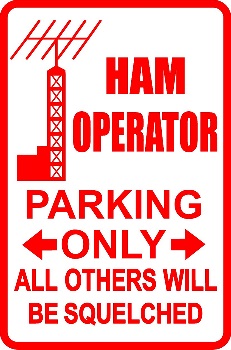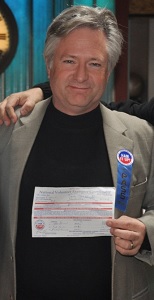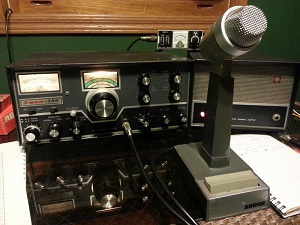For these Radio Pros, Amateur Radio Offers Enjoyment | Telos Alliance
By The Telos Alliance Team on Aug 20, 2014 2:43:00 PM
 For these Radio Pros, Amateur Radio Offers Enjoyment
For these Radio Pros, Amateur Radio Offers Enjoyment
It’s no surprise that many broadcast engineers are also amateur radio enthusiasts. The concept of sending out a signal and communicating with people around the globe combined with the ability to tinker with gear and tweak that signal makes for an exciting mix for radio technicians, electrical engineers and others the world over.
It may also come as no surprise that we’ve got a few amateur radio operators within the ranks of The Telos Alliance. Chief Science Officer Greg Shay, KD8WLN, Telos Systems Vice President Kirk Harnack, KD5FYD and Support Specialist Ted Alexander, W8IXY are proud to be ‘hams,’ and each has a unique perspective on the hobby.
For Ted, a licensed amateur radio operator since 1960, it was the combination of radio and mechanics that drew him in. “I was interested in radio and electronics (and mechanical things) as long as I can remember... I had read about ham radio since early grade school. A classmate's dad was a ham, and that turned up the fire for me.”
For Greg Shay, his interest developed from listening to shortwave radio. “When I was about 10 years old, my grandparents had one of those old RCA console type radios that included shortwave… I used to like to listen to the weird sounds on shortwave, and heard Morse code for the first time,” says Greg. “I was fascinated by this, and my grandfather built a small device that printed out Morse code on a strip of paper.”
Greg later learned to copy Morse code by ear. “I got my first ham license - a Novice - in 1976, when I was 15. I couldn't even drive myself to the place to take the test! When I was 17 in high school, I upgraded my license to the Advanced class. This meant I had to pass a Morse code test at 13 words per minute - moderately fast - in front of FCC examiners. It was nerve racking!”
While broadcast and amateur radio have in common the characteristic of sending out a signal, there are many differences. With ham radio, most communication is two-way, and point-to-point, while traditional broadcast is one way, and point to multipoint. Additionally, ham radio is non-commercial by definition and regulation, while broadcasting is mostly commercial. As Ted points out, “Broadcast radio and television is usually ‘sound and pictures’ and terrestrial; ham radio can use sound, pictures and data, and send signals to bounce off the moon, and even talk directly to ham operators on the International Space Station.”
Greg stresses the important role hams play in times of emergency. “One of the functions of Amateur radio is to serve as emergency community backup communications in the case of disaster or emergency. You will see hams in the news worldwide after earthquakes and hurricanes.”
Amateur Radio offers opportunity to experiment with technololgy
A great benefit of amateur radio is that it encourages experimentation. “With Amateur Radio one can experiment and learn by doing more easily - and at more convenient times - than one can with commercial broadcast equipment,” Kirk points out. “In broadcast radio, there's little room for experimentation with the very purpose-built facilities of a broadcast studio and transmitter. With amateur radio - as long as one stays within the rules - there is wide range for self-guided learning.” It’s this type of experimentation with technology that so many find appealing about amateur radio.
A variety of communication applications touch on aspects of amateur radio: satellite, Morse code (CW), low power (QRP), high power, moon bounce (EME), AM, FM, single sideband (SSB), digital transmission modes, amateur television, and more. Interestingly, the ham community is often quick to adopt new technologies, while broadcast needs to cater to the masses.
Similarly, it’s not uncommon for amateur radio enthusiasts to build their own systems. As a budding electrical engineer at the time, this idea appealed to Greg Shay. “For me, Amateur radio was all about building my own equipment. I built my first radio from a schematic in the ARRL (Amateur Radio Relay League) manual when I was 15 and didn't know very much about electronics, yet I was working with 400VDC to the vacuum tubes. This hands-on early experience building real electronics gear directly led to my becoming an electrical engineer.”
Greg recently returned to the hobby after several years away, and has been pleasantly surprised to meet the community of ham radio enthusiasts in the broadcast industry. “When I went to college, and for many years… I wasn't active. I kept my rig in a box in the basement... This year, a good buddy of mine decided to get his ham license back, and inspired me to get active again too. So I took the new test and now I am general class; I'm planning on getting the top 'extra' class license soon.”
Global Communication
Ted, Kirk and Greg have each had unique experiences as amateur radio operators, including, as you might imagine, talking to other hams from across the globe. Ted says making contact with others worldwide is exciting. “I only speak English, but many hams around the world also speak enough English to be able to at least do basic communication.” Ted is also a veteran of the Dayton Hamvention, and has participated in ham radio field days for many years.
 Speaking with others around the world is equally interesting for Greg, who likens this aspect of amateur radio to a treasure hunt. “I listen carefully for the weaker signals, especially with foreign accents. It is a challenge to get them to hear you, when many others might be trying to call them at the same time. This is called a 'pile up.'” Fortunately for me, my 1968 Swan 500 radio is like a late 1960s muscle car; it has quite a bit of power and I can usually get through and be heard.”
Speaking with others around the world is equally interesting for Greg, who likens this aspect of amateur radio to a treasure hunt. “I listen carefully for the weaker signals, especially with foreign accents. It is a challenge to get them to hear you, when many others might be trying to call them at the same time. This is called a 'pile up.'” Fortunately for me, my 1968 Swan 500 radio is like a late 1960s muscle car; it has quite a bit of power and I can usually get through and be heard.”
Typically, conversations are short. Hams often like to check that they can be heard, and how their signal is getting through, but sometimes people want to have more of a conversation.
Greg was very happy with some recent communications. “I am very excited that I talked to the science station at the South Pole, in Antarctica. A couple of days before that I talked to the Russian science station at Lake Vostok, also in Antarctica.” In his first three months back, Greg logged 84 contacts to 40 different countries.
Like Ted and Greg, Kirk has conversed with hams around the world as well, but via 2-meter repeaters connected through IRLP or Echolink, Internet-connection standards which allow users to connect a nearby repeater to another repeater elsewhere in the world. The two repeaters are then connected for both audio and control.
Ham it Up!
What’s more, there’s the camaraderie with others interested in technology, not only via radio communication, but through local amateur radio clubs the world over. “It's another way - aside from broadcast - to connect with other people who share an interest in technology.”
The Amateur Radio Relay League provides information on all things amateur radio, and other organizations s such as ARES, APRS and RACES keep hams in the loop on specific areas of the interest.
If you’re interested in amateur radio, and you know someone who’s a ham, talk to them and find out how to study for and obtain your license. Soon you’ll be learning new technology and communicating with people from across the globe.
Telos Alliance has led the audio industry’s innovation in Broadcast Audio, Digital Mixing & Mastering, Audio Processors & Compression, Broadcast Mixing Consoles, Audio Interfaces, AoIP & VoIP for over three decades. The Telos Alliance family of products include Telos® Systems, Omnia® Audio, Axia® Audio, Linear Acoustic®, 25-Seven® Systems, Minnetonka™ Audio and Jünger Audio. Covering all ranges of Audio Applications for Radio & Television from Telos Infinity IP Intercom Systems, Jünger Audio AIXpressor Audio Processor, Omnia 11 Radio Processors, Axia Networked Quasar Broadcast Mixing Consoles and Linear Acoustic AMS Audio Quality Loudness Monitoring and 25-Seven TVC-15 Watermark Analyzer & Monitor. Telos Alliance offers audio solutions for any and every Radio, Television, Live Events, Podcast & Live Streaming Studio With Telos Alliance “Broadcast Without Limits.”
Recent Posts
Subscribe
If you love broadcast audio, you'll love Telos Alliance's newsletter. Get it delivered to your inbox by subscribing below!